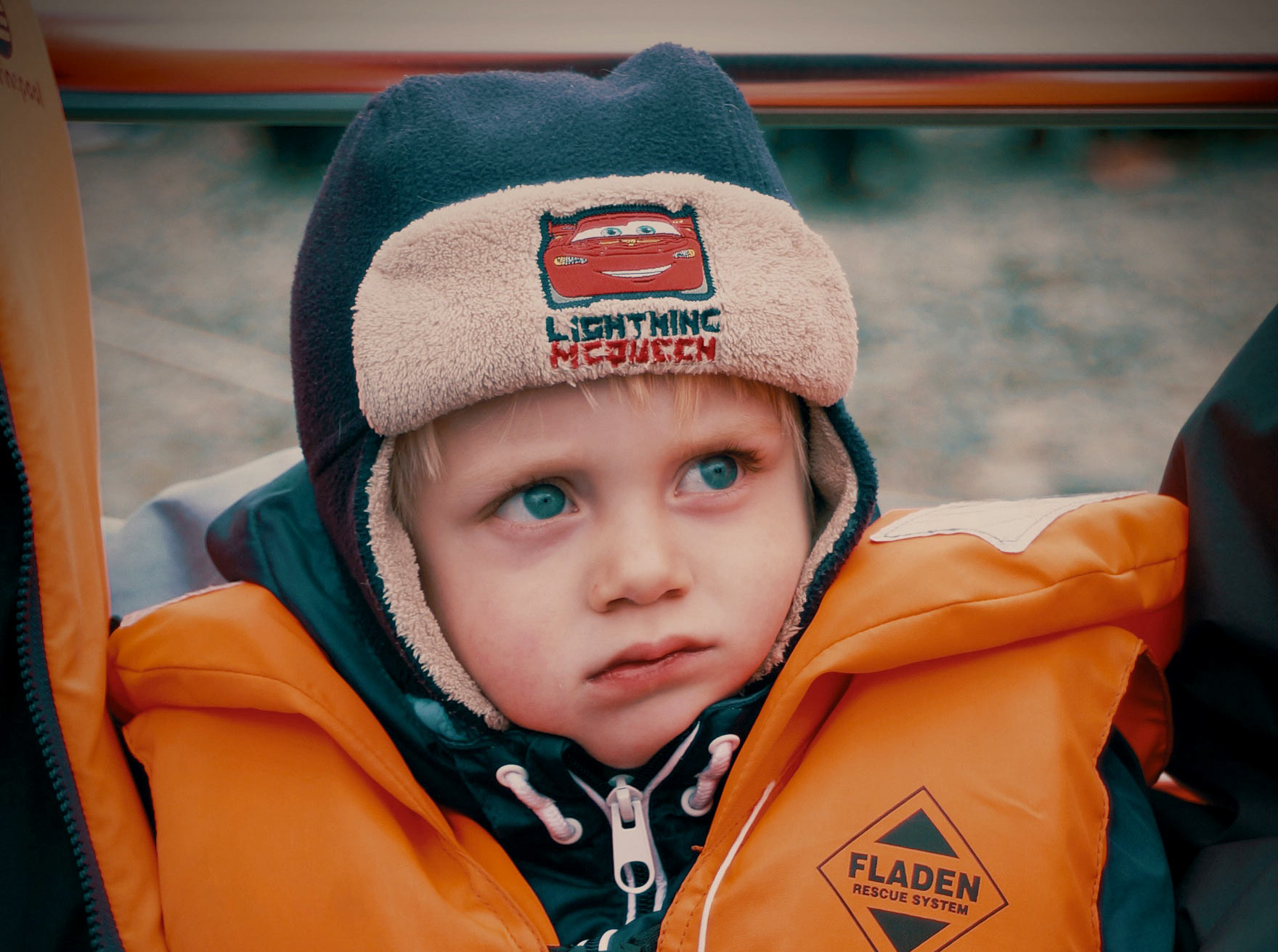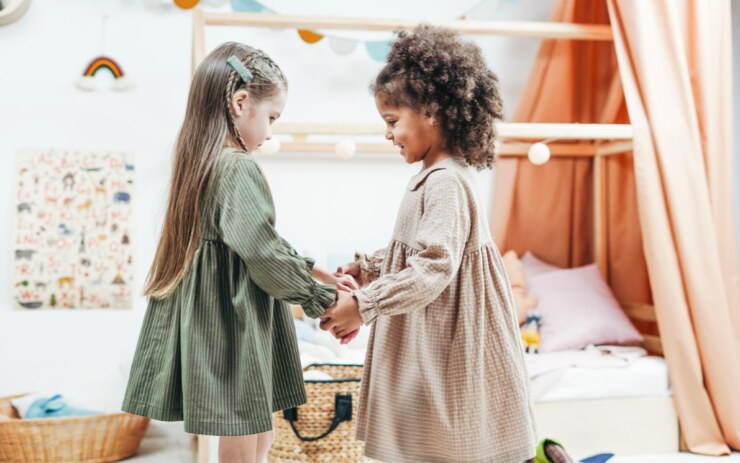Carolyn Ragatz, one of our certified trainers, wrote me an email that fleshes out the question for this week. “I just read your latest blog on screen time–so important to get that word out and I posted on my fb & twitter pages. I have another related question: we are noticing an increase in students with anxiety. Now, most of this coming to us, according to parents, without any official diagnosis. What are your thoughts? Is this the trendy new thing to talk about or is it really an increase? How can schools deal with this? It is not something we as teachers generally have a lot of background in. I would love to hear any suggestions you have for us or maybe it could be a blog topic for you.”
Carolyn is correct: the number of anxious children is indeed growing. New federal research reported recently in Counseling Today reveals that, “Anxiety disorders are the most common mental illness in the United States, affecting 18 percent of the adult population, or more than 40 million people, according to the National Institutes of Health. Among adolescents the prevalence is even higher: 25 percent of youth ages 13 to 18 live with some type of anxiety disorder.” The sense of “being anxious,” or “feeling anxious,” as Carolyn is noting, can increase these numbers, especially among children who are not officially diagnosed with a disorder.
At the same time, Carolyn is right to remind us that we as a culture do tend to over-diagnose disorders. The child may be naturally “a bit anxious” or “by personality, somewhat on the worrying side” but not suffer an anxiety disorder. So, there is an “anxiety spectrum” on which we all fit somewhere. For some of us, worry can feel uncomfortable but is not a DSM mental condition; for others, we should get a diagnosis so that we get the help we need.
To determine where your child or student might fit on the spectrum of “anxiety spectrum” look for:
*racing thoughts
*irrational fear
*excessive rumination (constantly thinking about emotional slights or other worries)
*seeing too many negative possibilities in nearly every situation
*insomnia
*racing heart
*sweaty palms
*upset stomach
*headaches
*verbalizing fears and worries constantly.
If you are seeing at least three of these symptoms in a child in worrisome quantity or quality, it may be very important that you seek insight from a mental health professional. While 5 years old is generally too soon to give a correct diagnosis (with some exceptions), 10 years old will likely not be.
Why Are So Many Children Suffering So Much Anxiety?
The causes and solutions are interconnected. They include all three determinant factors in the life of a child’s brain—nature, nurture, and culture–and so they generally fit under three major categories:
Epidemiological threats to genetic, cellular and brain development from neuro-toxins in food, fertilizer, physical life, and other brain-reactive environments (this can include screen-time as a neuro-toxin and includes malnutrition).
Trauma, such as sexual-abuse, abuse, and bullying, including cyber-bullying or social media bullying, and constant learning-failure or trauma in schools, on streets, in homes and neighborhoods.
Under-attachment and under-nurturance (e.g. lack of mother or father attachment, breakdown in nuclear and extended families, under-attachment to the natural world, lack of multiple healthy mentors and role models).
The three causal factors are especially hard on children who already have some of the gene markers for anxiety. These markets may become triggered by a cumulative effective from developmental experiences in everyday life.
For instance, BPA, which is a poison we intake from plastics, might trigger genetic markers; endocrine disrupters in non-organic food and fertilizer might do the same.
Various traumas can trigger the genes, such as excessive time—especially early in the child’s life—on electronics and technologies. Abuse and bullying can do the same.
Attachment distresses that accumulate can mix with puberty’s natural triggering of markers so that anxiety seems to increase around 9 or 10 or just later. Children’s psyches need healthy bonds and attachments and perhaps don’t get them or feel like they fail in attachments.
Multi-tasking stress is increasing among children—their brains are being asked to do too many things at once and that can become traumatic. We are seeing this condition increasing with our girls: their emotional and personal multi-tasking is unnatural for a 10-year-old’s brain and triggers anxiety.
Social expectations that do not fit a child’s brain can traumatize children if the expectations go on for long periods of time and the child sees no way to meet the expectations. We see this in schools, quite often, as traditional educational formats do not fit the brains of boys, and boys constantly fail.
Solutions: What Would Nature Do?
Author Jay Griffiths writes, “The losses of the natural world are our losses. Their silences silence something in the human mind.” In the very worthy medical model for solutions to anxiety issues, the starting place for anxiety is diagnosis and medical treatment. It is the right model if you have a child with an anxiety disorder. Yet, too, there is an under-level of work to do for all children, if we are going to deal with the American epidemic of anxiety.
If you have watched the hit TV series “Stranger Things” you have seen “the Upside Down.” This is an alternative reality of monsters that the children in the series must constantly navigate to save their own world from harm. Ultimately, many of our children are anxious today because their genetic markers for anxiety are getting triggered in a relatively “unnatural” childhood. They are lost and anxious in an “upside down” world that has strayed from natural brain development.
In our children’s Upside Down, neuro-toxic intake is unnatural to their cells; their abuse and bullying traumas limit areas of natural brain development that they need if they are to grow up whole and confident; their loneliness (despite their seeming to have multiple points of contact with people through social media) cruelly mitigates their own abilities to bond and grow up healthy. In our children’s upside-down, multi-tasking, excessive homework, unhealthy junk food, too much screen-time, video-games on school nights, lack of time out in nature…all can create monsters.
Some stress is good for children—we should not over-protect kids from normal stresses—but some stress is chronically bad for them and will lead to heightened anxiety. The brain is naturally self-protective; when children are hyper-stressed, their cortisol (stress hormone) levels become constantly high, which in turn triggers gene expression for anxiety.
Treating the Anxiety Epidemic in Our Children and Students
Because the causes of chronic anxiety are various, treatment must be various. First and foremost, I hope you will look at ways to answer the question, “What would nature do?” If you have or know an anxious child, study that child’s life for these issues.
*Poisons coming into the child’s natural system from neurotoxins (both Saving Our Sons and The Minds of Girls can help you identify these). Gradually, remove these poisons.
*Trauma in the child’s life that is powerful and chronic enough to harm the child’s development. If the child is being traumatized or has been significantly traumatized, the trauma will need treatment and/or removal of the child from the traumatic environment.
*Under-attachment to parents or others the child needs in order to be whole and confident. Fix the family, fix the school, fix the relationships so the child has the multiple, important bonds this brain needs.
Meanwhile, if medication is needed, use medication as prescribed by your physician or psychiatrist. Because gene testing is now available before medication use, I highly recommend gene and blood testing so that you and your team can see what medications will work best (and worst) with your child.
Helping Girls with Anxiety
Because the brains of girls and boys are naturally different, some gender-specific insights, treatments, and solutions can be very important.
Girls often hyper-ruminate when they are in an anxiety cycle. It is crucial that parents and teachers both “listen” to the girl’s sorrows AND help her quiet her verbal rumination in favor of problem-solving. Just listening can make things worse—the girl will continue to hyper-ruminate, increasing her anxiety. Sometimes we think, “If we stop listening we will harm her voice and make things worse.” Generally, this is not so: nature is diverse, and we need diverse responses to a hyper-ruminating child.
Girls often hyper-multi-task and we need to help them curtail this urge, especially if they are anxious girls. You may need to help them focus on a few important relationships and enterprises and teach them to stop checking social media all the time. Their anxious brains just get more anxious as they hyper-multi-task online and in life.
Some people, including many girls, show anxiety by employing what we call “negativity bias.” Negativity is a normal survival response, locked into our limbic brains by millions of years of survival. Our senses perceive the world as it is, then certain parts of the brain (e.g., the cingulate gyrus, basal ganglia, and caudate nucleus) process our sensory apprehensions so that our bodies will act and move toward survival. If your daughter is anxious, her negativity bias may be working overtime, hyper-active, hyper-vigilant and reactive. The world (and she herself and nearly all her relationships) are cast darkly in her.
She may need to be put in a new environment that is positive for her; she will likely need constant gentle correction, such as “You are seeing this negatively, but look at the positive”; she may need therapy or counseling for a period of time; medication may indeed be needed; and exercise and time out in nature will likely be helpful as both of these strategies release healthy brain chemistry that counteracts negativity bias.
Helping Boys with Anxiety
Everything we just said about a girl can certainly apply to a boy, given how much variety there is in sex and gender; meanwhile, everything said here about boys can potentially help a girl. For both children, hold off on giving a Smart Phone until the child is 13, if possible, and curtail screen time and online use as developmentally appropriate (for a developmental, operations manual, please see The Minds of Girls and Saving Our Sons).
Male suicide and violence rates are too high. If you see an isolated boy—bedroom doors constantly closed, and the boy isolated in there–keep bedroom doors open. Monitor the boy’s online life carefully, especially if he is obsessed with video games, violence, or porn. He lives in your home—he does not necessarily have an adult’s right of privacy where online and gaming life is concerned.
Support schools and educators in receiving training on how to teach across the curriculum, including the social-emotional curriculum, in ways that support and are effective with boys. When schools receive this training, grades, test scores, and behavior among students improves (see www.gurianinstitute.com/success). These schools often increase physical movement in class, cut back on irrelevant and excessive homework, decrease screen-time especially for younger kids, better target and treat bullying and cyber-bullying, re-assess excessive high stakes testing, and generally increase recess, exercise-time, and project-driven learning in the natural world. All these moves can help decrease student and parent anxiety.
Support boys in finding a purpose in life, and mentors for that purpose. Boys are highly dependent for effective functioning on bonds and mentors that help them reveal their own courage, wisdom, competitiveness, self-motivation, ambition, effective performance in life, values, and personal health. Boys need both women and men in this self-discovery but as they reach early adolescence, they need increased male mentors. Much male anxiety today grows culturally from a lack of these natural rites-of-passage experiences and male-male bonds. Target people to mentor live-purpose in each boy through each stage of life.
Anxiety can be treated effectively, and those treatments can often have positive effects on parents who may struggle with anxiety themselves. If you are one of these parents or teachers, your courage in pointing out anxiety, bringing it up, clarifying it, and working with it in front of your children can be a powerful asset to the anxious child. If you have been in the “Upside Down,” you know of what you speak, and you know what works and doesn’t work.
Anxiety becomes natural to some of us, but so is courage, also, natural. Every child can return to courage and refill his or her cup there. This is true even if that same child is your child and already prone toward being more anxious than others during the lifespan. Even the most anxious child is bound for a unique greatness in the real world.










